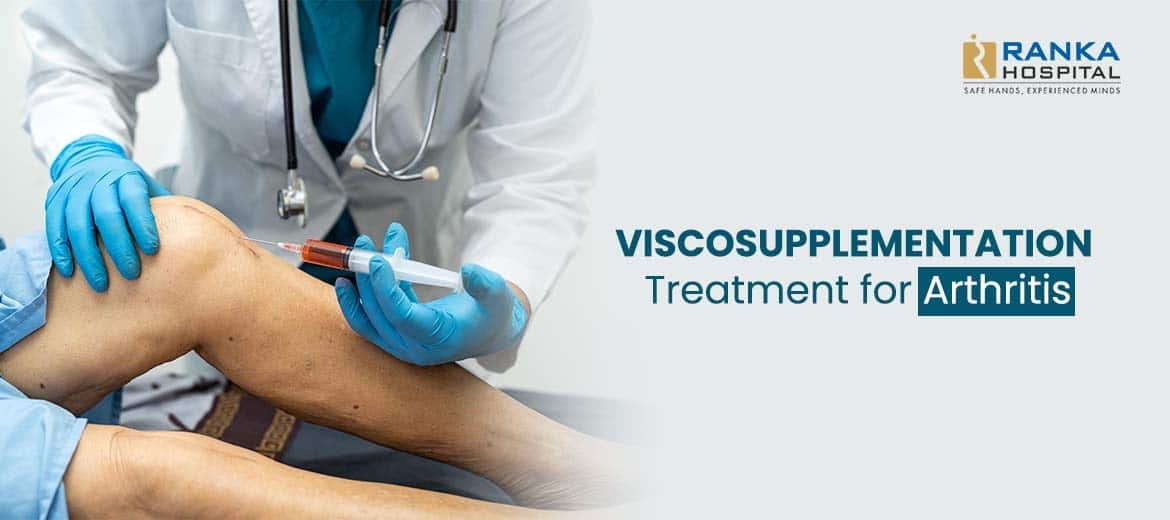Viscosupplementation Treatment for Arthritis
Are you or any of your loved ones suffering from arthritis? Then, it is likely that you’ve heard about viscosupplementation. It is a treatment that can help ease arthritis symptoms. However, what is viscosupplementation, what is its procedure, why is it done, and what are the risks involved in the treatment? We understand you want to relieve your arthritis symptoms and are eager to explore this innovative arthritis treatment. So, here’s a blog that answers your questions about viscosupplementation for arthritis.
What is Viscosupplementation Treatment for Arthritis?
At the outset, let’s understand the premise of arthritis. The bones making up your joints usually have a cap of cartilage on their ends. This cartilage is responsible for moving the bones smoothly against each other. It has a fluid coating with hyaluronic acid, working like a lubricant and shock absorber in your joint.
Osteoarthritis features the breaking down of the cartilage. When it happens, the bones of your joint scrape together unusually. People suffering from osteoarthritis lack hyaluronic acid in their joints. It can lead to pain, stiffness, and swelling. Thus, viscosupplementation involves replacing the hyaluronic acid to help reduce symptoms.
During the viscosupplementation treatment for arthritis, the surgeon injects hyaluronic acid into your joint. The thick fluid helps alleviate pain and swelling in the joint. The surgeons may first inject a numbing medicine into the space around the knee joint. They may drain the fluid causing swelling in the joint. After that, the surgeon will inject hyaluronic acid into the space inside the joint. Of course, the pain doesn’t reduce immediately but after a proper and undergoing a full course treatment.
It should be noted that currently, hyaluronic acid is approved only to treat knee arthritis.
When Can Viscosupplementation Treatment for Arthritis Work?
You may go for viscosupplementation if over-the-counter pain medications or corticosteroid injections have failed to alleviate arthritis symptoms. Viscosupplementation can work in people with mild to moderate arthritis. It can prove an apt alternative for people looking to and having some scope to delay joint surgery.
Usually, doctors use viscosupplementation to treat osteoarthritis. However, it can also help treat rheumatoid arthritis. However, it should be remembered that the individual suitability of the treatment can vary depending on the condition, its intensity, and the person’s overall health condition.
What Happens Before and During Viscosupplementation?
The doctor may ask you to stop certain medications if you’ve been consuming them. You can eat and drink as normal on the day of treatment. Inform your doctor if you have a fever. Wear loose clothes to uncover the joint. Adhere to the doctor’s pre-procedural instructions to ensure a convenient, safe, and effective treatment.
Now, what happens during the treatment? Here’s the answer.
- Your healthcare provider will clean the area where you’ll have your injection.
- Anesthesia is given into the area around your joint.
- The surgeon may use imaging to inject the acid into the right spot. They may also use ultrasound that displays continuous X-rays.
- A small amount of extra joint fluid, if any, will be removed.
- Hyaluronic acid will be injected into the joint with a needle attached to a syringe.
- The injected site will be bandaged.
You can go home shortly after the procedure. However, you should consult your doctor about the activities you can perform after the procedure. Some instructions may include avoiding standing for the next 48 hours or so and refraining from jogging, walking, or lifting heavy weights. Furthermore, you can expect some amount of warmth, pain, and swelling after the procedure.
The symptoms usually won’t last for long, and your doctor will provide instructions on how to deal with them. If they persist for a period longer than specified by the doctor, see the latter and treat them promptly.
Risks Associated with Viscosupplementation for Arthritis
The most common risk is a flare-up of arthritis immediately after the injection, causing short-term pain and swelling. Some other less commonly observed risks include allergic reactions, bleeding, pain in the injected region, and infection.
Do you still have questions about viscosupplementation for arthritis – probably some specific ones? Then, visit Ranka Hospital and receive a comprehensive consultation. Call us at +91 – 20 – 24261530 to book an appointment with our doctors.

